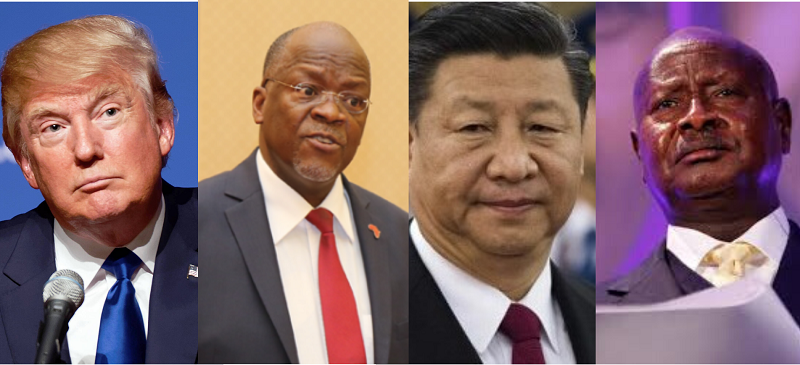"Communication and a race against time"
April 11th, 2014 The disappearance of Malaysian flight MH370 launched a massive search but also underlined the importance of communication, writes Geetha Kanniah, 17, a Commonwealth Correspondent from Malaysia, who argues that both communication technology and style of communication are important in times of disaster.
The disappearance of Malaysian flight MH370 launched a massive search but also underlined the importance of communication, writes Geetha Kanniah, 17, a Commonwealth Correspondent from Malaysia, who argues that both communication technology and style of communication are important in times of disaster.
MH 370 made world headlines in the past few weeks; a sad story and a rough time for families of passengers and crew. It’s a scary situation to imagine oneself in – the disappearance of flight MH370 in thin air leaves everyone picturing the worst for those on board in those final hours before doom.
It all started off with a Malaysian Airline flight MH370 carrying 239 passengers to Beijing, China. En route, it was found to have turned back and headed past the Andaman Islands. From there on, it was a guessing game; it could have headed up north to Turkmenistan or down south to Australia.
What was sure was that the plane flew for hours without contact, leaving an exasperating search for the flight. With growing evidence, the search area also grew, from the South China Sea to the Straits of Melaka, to the Andaman Sea and, now, the deep blue Indian Ocean. But what’s so peculiar is that it’s not just any ordinary flight that vanished, it’s a Boeing 777-200 ER. In other words, a huge plane that is among the safest out there. Theoretically, this plane is impossible to fly without being detected by radar, let alone vanish. But the reality is, it has flown without being spotted and it has disappeared.
As a Malaysian, I am affected not only by the loss of a Malaysian carrier, but also by the surrounding issues: different reactions from the Malaysian and Chinese, criticisms heaped on the Malaysian government, contradicting media coverage, flow of speculation on social networks. But what I’ve learned from this whole episode is how important communication really is. Vital in every element of the search – transmissions of sound waves through talking, relaying messages, international connections and even outer space frequencies; one is just as important as the other to advance the search, to get all hands on deck and to keep the public calm.
Different nations have come together in search for the plane, to solve this great mystery. Last week, there were 43 ships and 58 aircraft from 14 different countries. That number increased to 25 countries involved over the week with experts from America, Britain and China playing an important role in the search. Even NASA played an unconventional role, pitching in and putting to use their valuable space assets. These countries have professed their determination and will power to solve the growing mystery.
In this age of technology, hundreds of intercommunication systems on a flight are used to navigate a plane, detect a plane and to keep one in check. According to CNN, a pilot must aviate, navigate and communicate in that order. In this flight, however, someone was definitely aviating and navigating but either couldn’t or wouldn’t communicate. This just shows how a lack of conveying whereabouts causes such turmoil in the flight search operations. Also, without access to the plane’s recording system, it has been close to impossible for the search party to find evidence of the flight.
Thankfully, advanced technology with communications tools allow for satellites and cameras on space stations to aid with the search by finding debris in the ocean; satellite imagery is being used to find the plane before and after the disappearance, and SONAR is used to detect elements of the plane underwater.
Officials have a duty to tell nothing but the truth to the public. Transparency is key here but at the same time they mustn’t reveal too much. Mastering the art of setting the record straight with complete but careful disclosure isn’t an easy task. Families tend to ask many questions but the officials need to find a balance in a matter of too little, too much to be said.
The government has been criticized for not relaying the truth. An example would be the pilot’s final message “Alright, goodnight”, which was later corrected to “Goodnight 370”. Besides that, families weren’t satisfied with Prime Minister Datuk Seri Najib Tun Razak’s statement on how the plane went down in the Indian Ocean. In his sombre state, he delivered a message of closure when least expected by them.
The media is another vital body. However, Malaysian news coverage has also been disapproved by the public for redundant information. Reporters chat over coffee making it seem a trivial matter. They lack enthusiasm and apt body language. These small details are just as important as big machines in the sea. Hence, they need to be hands on, and up to date.
While the Singaporean government had praised Malaysian officials, and Richard Quest from CNN had applauded the way communications were handled, it is still crucial for facts, figures, enthusiasm, empathy, sense of urgency and timely announcements to be delivered in critical situations.
It’s a race against time. All these days later, no debris and no oil-spills keep the families hopeful. My country mourns for the loss of the flight, the nation prays for their return. #prayforMH370
photo credit: Sham Hardy via photopin cc
…………………………………………………………………………………………………………………
About me:
I am a Malaysian who looks for adventure and thrill, and is passionate about sports. I enjoy tennis, swimming, badminton and most recently, longboarding. I also spend a lot of my time with my camera, capturing as much as I can, while documenting them on my blog: journeywithacamera.wordpress.com.
My travels give me the exposure to learn about the world. And to know and do more, I volunteer with different organizations, particularly in the marine field. My ambition is to be an explorer and to reach out to people.
…………………………………………………………………………………………………………………
Opinions expressed in this article are those of the author and do not necessarily represent the views of the Commonwealth Youth Programme. Articles are published in a spirit of dialogue, respect and understanding. If you disagree, why not submit a response?
To learn more about becoming a Commonwealth Correspondent please visit: http://www.yourcommonwealth.org/submit-articles/commonwealthcorrespondents/
…………………………………………………………………………………………………………………




